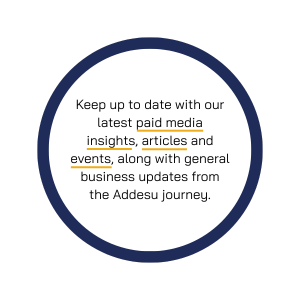How to tell if your agency is really delivering in a QBR

- Jacob Bennett
- Reading time: 8 minutes
Quarterly business reviews (QBRs) are not right for every agency-client relationship. They’re time-intensive commitments, and if you’re a smaller business it’s smarter to spread your agency’s time across action items instead.
However, in the right scenario, a QBR can be an important touchpoint between a business and its digital marketing partner. The key point is that they’re not just about reviewing campaign performance. They’re about assessing whether your partner is providing genuine insight, strategic thinking, and a roadmap for growth. Ultimately the same principles can be applied to monthly / weekly meetings, albeit at a reduced level.
To make sure you’re getting maximum value from these sessions, here are five areas to focus on when evaluating performance during a QBR.
For example, if Meta shows conversions are up 20%, do they test that against your actual lead quality or CRM close rates? If they’re sweeping caveats under the rug, you may be getting a glossy story rather than a realistic one. A trustworthy partner isn’t afraid to highlight the cracks, and then suggest ways to close them.
Look for action-oriented takeaways on both sides of the equation:
Look for whether they bring something unexpected into the room. Maybe a competitor’s ad creative they’ve been monitoring, a channel trend they’ve spotted, or an experiment that failed but revealed useful learning. These nuggets often don’t live in dashboards, or in the recommendations the AI in ad platforms is unearthing. They live in the spaces in between, and prove your partner is curious, proactive, and scanning the horizon for you.
Repetitive insight can, and should, be automated for ease. This gives the time for your agency to provide the human insight that focuses on the new. If your QBRs always feel predictable, you might just be paying for reporting, not partnership.
Finally, it might sound cosmetic, but the way a QBR is presented says a lot about the care taken behind the scenes. Are graphs consistent across slides? Do colours and fonts reflect your brand? Is information overcrowded, or easy to digest at a glance?
A partner who takes the time to make the deck readable is showing that they value your time and attention. Conversely, if you’re constantly squinting at cluttered charts or asking them to “explain this slide again,” it’s a sign of rushed preparation.
However, in the right scenario, a QBR can be an important touchpoint between a business and its digital marketing partner. The key point is that they’re not just about reviewing campaign performance. They’re about assessing whether your partner is providing genuine insight, strategic thinking, and a roadmap for growth. Ultimately the same principles can be applied to monthly / weekly meetings, albeit at a reduced level.
To make sure you’re getting maximum value from these sessions, here are five areas to focus on when evaluating performance during a QBR.
1. Look Beyond the Headlines: The Triple-Punch Approach
A strong QBR shouldn’t just present you with topline campaign metrics. Yes, you want to see how performance stacks up against KPIs, but that’s only the beginning. A well prepared partner will take you deeper by applying a “triple-punch” approach:- The What: Key KPIs and familiar metrics, clearly tracked over time.
- The Why: Insightful analysis that connects the dots, showing why performance shifted and what external factors (seasonality, competition, tracking changes, market shifts) played a role.
- The What Next: Highlighting how today’s activity feeds into a longer-term strategy (building brand equity, improving customer lifetime value, or preparing for industry changes).
2. How They Handle Data Nuance
Most QBRs contain charts and dashboards. But the real test is whether your partner acknowledges the limits of the data. Do they openly explain attribution gaps or platform reporting bias? Are they able to show you profitability alongside platform ROAS, rather than taking the raw numbers at face value?For example, if Meta shows conversions are up 20%, do they test that against your actual lead quality or CRM close rates? If they’re sweeping caveats under the rug, you may be getting a glossy story rather than a realistic one. A trustworthy partner isn’t afraid to highlight the cracks, and then suggest ways to close them.
3. Balance: Celebrate Wins, But Challenge Weaknesses
A QBR should strike the right balance between celebrating successes and confronting challenges. It’s easy for a partner to focus only on the positives, but that doesn’t help you grow. The best partners are confident enough to highlight where performance fell short, explain why, and outline concrete steps for improvement.Look for action-oriented takeaways on both sides of the equation:
- Where to double down: The campaigns, audiences, or creative types that are working well—and how to scale them.
- Where to course-correct: The areas underperforming and the plan to address them.
4. The Quality of Their “Unasked” Insights
Every partner will answer the questions you bring to the table. But the best ones answer the questions you didn’t know to ask.Look for whether they bring something unexpected into the room. Maybe a competitor’s ad creative they’ve been monitoring, a channel trend they’ve spotted, or an experiment that failed but revealed useful learning. These nuggets often don’t live in dashboards, or in the recommendations the AI in ad platforms is unearthing. They live in the spaces in between, and prove your partner is curious, proactive, and scanning the horizon for you.
Repetitive insight can, and should, be automated for ease. This gives the time for your agency to provide the human insight that focuses on the new. If your QBRs always feel predictable, you might just be paying for reporting, not partnership.
5. How They Treat Delivery and Design
There are two key points here. The first is simple – have they delivered on what you’ve asked them to? A lot of agencies will use the same worn out templates for these meetings, templates they could fill with their eyes closed. In doing so, they often fail to address the key areas that their customers have requested, and don’t include the unasked insights. Flexibility on delivery is critical.Finally, it might sound cosmetic, but the way a QBR is presented says a lot about the care taken behind the scenes. Are graphs consistent across slides? Do colours and fonts reflect your brand? Is information overcrowded, or easy to digest at a glance?
A partner who takes the time to make the deck readable is showing that they value your time and attention. Conversely, if you’re constantly squinting at cluttered charts or asking them to “explain this slide again,” it’s a sign of rushed preparation.
Final Thoughts
A QBR shouldn’t just be a quarterly check-in. it’s a litmus test of whether your agency is truly invested in your growth. Beyond reporting on campaigns, the best partners bring clarity, candour, and proactive insight. To make sure you’re getting maximum value, ask yourself (and your agency) these five questions:- Do they go beyond the topline metrics to explain not just what happened, but why?
- Are they honest about the limits of the data, and do they validate platform numbers against real business outcomes?
- Do they celebrate wins while also confronting underperformance with a clear improvement plan?
- Are they bringing new, unprompted insights or trends to the table that you wouldn’t have seen yourself?
- Does the presentation feel built for you, clear and well-prepared, or templated, rushed and cluttered?
